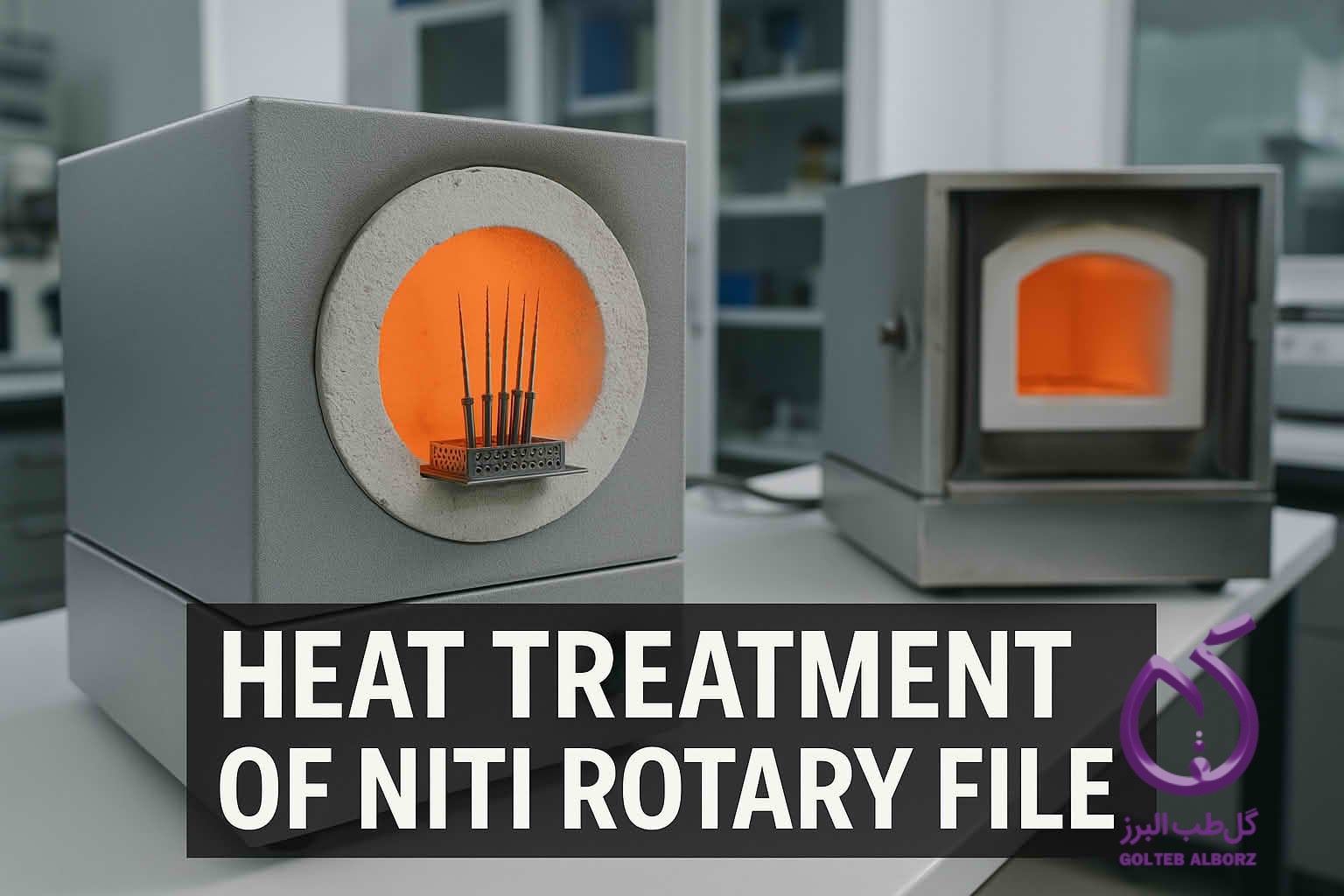Overview of Nickel-Titanium in Endodontics
Nickel-Titanium (Niti, Nitinol, 55-Nitinol) alloys have been in use in endodontics since 1988.
Unique properties of NiTi:
-
Superelasticity
-
Shape-memory (when heat-treated)
NiTi rotary files can be generally divided into two types:
-
Austenitic (conventional NiTi)
-
Martensitic (heat-treated NiTi)
Modern NiTi rotary files are treated or machined by various processes.
.jpg)
First endodontic application of NiTi:
Manufactured #15 hand files from orthodontic arch wires
These early NiTi files were machined rather than twisted.
NiTi files compared to stainless steel files:
-
Higher elastic flexibility (lower modulus of elasticity)
-
Superior resistance to torsional fracture (more ductility)
Opened new field of instrumentation in endodontics
NiTi can exist in two crystalline (atomic) structures
-
Austenite phase: body-centered cubic lattice,
High temperature (parent) phase
-
Martensite phase: closely-packed hexagonal lattice,
Low-temperature (daughter) phase; exists in twinned and detwinned orientations
Martensite transformation: instantaneous change in crystal structure; adjacent planes of atoms are shifted less than a full interatomic distance.
Martensitic transformation
-
Can occur in heat-treated NiTi; extent of phase shifting depends on the start (Ms) and finish (Mf) temperatures
-
Can occur during application of stress (NiTi file during root canal preparation)
This property of martensitic transformation explains Niti’s super elasticity and shape-memory effect.
Heating martensite phase NiTi reverts it back to the original austenite phase structure (shape memory)
Applying stress to austenite phase NiTi induces martensitic transformation, while reduction of the same stress leads to springback and a return to the austenite phase (super elasticity)
Engine-driven, rotary NiTi instrumentation:
-
Minimal forces required to prepare root canals
-
Canal transportation and deviation are minimized
-
Diminished connection between instrument stiffness and cross-sectional width, allowing for increased diameters and tapers.
-
Greater variability of cutting blades, rake angles, flute depth, etc. for more efficient preparation design
-
Notable disadvantage is instrument fracture – can occur due to metal fatigue, instrument design, and operator-dependent instrument use
-
Niti files have limited working lives, dependent on canal diameter, canal angle (curvature), instrument diameter, rotational speed, metal characteristic, etc.
Effect of sterilizing NiTi files:
-
Decrease in cutting efficiency
-
Increase in depth of surface irregularities and surface roughness
-
Evidence of crack initiation and propagation
Effects of NaOCL on NiTi files:
-
No impact on cutting efficiency or resistance to fracture
-
Decrease in resistance to cyclic fatigue
-
Presence of corrosion
Niti rotary files are generally recommended for single use, especially in smaller sizes.
Proprietary NiTi manufacturing procedures are common:
-
Thermal, mechanical, and surface treatments
-
These processes attempt to improve resistance to fracture and increase flexibility
-
Ultimate goal is to prevent preparation errors and instrument fractures

